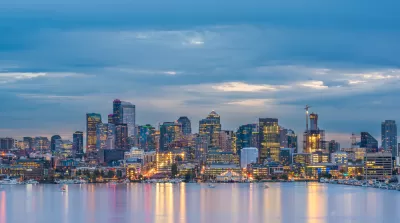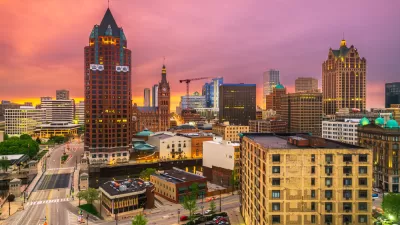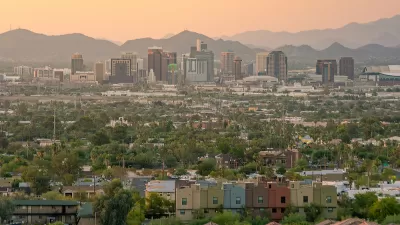Views about urban growth and decline often rely on statistics for metropolitan regions rather than cities proper. Here, Richard Florida looks at the fastest- and slowest-growing cities in America, separate from their metro areas.

When it comes to narratives about coastal superstar cities and a rising Sunbelt, "the reality is that most studies that purport to talk about cities are really talking about the performance of broader metropolitan areas," Richard Florida writes. A focus on cities themselves reveals uneven patterns of urban revitalization, where some are experiencing heady growth while others "continue to struggle and lose ground, whether to other cities or their own suburbs."
For the first of a four-part series, Florida worked with a team of researchers to examine America's 50 largest "core or principal cities" through the lenses of population and employment growth over the years 2012 through 2017.
In terms of population, the narrative of a burgeoning Sunbelt and a declining Frost Belt appears to hold. "However, the most rapidly growing large cities are not sprawling, unregulated Sunbelt ones (such as Houston), but two relatively expensive tech hubs, anchored by leading research universities—Seattle and Austin."
Employment patterns match the narrative of Sunbelt ascent even better, with the list of fastest-growing job markets in cities mirroring the list for metros. For both population and employment growth, "superstar" cities like New York, Los Angeles, and San Francisco rank only average.
FULL STORY: The Fastest-Growing U.S. Cities Aren’t What You Think

Study: Maui’s Plan to Convert Vacation Rentals to Long-Term Housing Could Cause Nearly $1 Billion Economic Loss
The plan would reduce visitor accommodation by 25,% resulting in 1,900 jobs lost.

North Texas Transit Leaders Tout Benefits of TOD for Growing Region
At a summit focused on transit-oriented development, policymakers discussed how North Texas’ expanded light rail system can serve as a tool for economic growth.

Why Should We Subsidize Public Transportation?
Many public transit agencies face financial stress due to rising costs, declining fare revenue, and declining subsidies. Transit advocates must provide a strong business case for increasing public transit funding.

How to Make US Trains Faster
Changes to boarding platforms and a switch to electric trains could improve U.S. passenger rail service without the added cost of high-speed rail.

Columbia’s Revitalized ‘Loop’ Is a Hub for Local Entrepreneurs
A focus on small businesses is helping a commercial corridor in Columbia, Missouri thrive.

Invasive Insect Threatens Minnesota’s Ash Forests
The Emerald Ash Borer is a rapidly spreading invasive pest threatening Minnesota’s ash trees, and homeowners are encouraged to plant diverse replacement species, avoid moving ash firewood, and monitor for signs of infestation.
Urban Design for Planners 1: Software Tools
This six-course series explores essential urban design concepts using open source software and equips planners with the tools they need to participate fully in the urban design process.
Planning for Universal Design
Learn the tools for implementing Universal Design in planning regulations.
Ascent Environmental
Borough of Carlisle
Institute for Housing and Urban Development Studies (IHS)
City of Grandview
Harvard GSD Executive Education
Toledo-Lucas County Plan Commissions
Salt Lake City
NYU Wagner Graduate School of Public Service




























